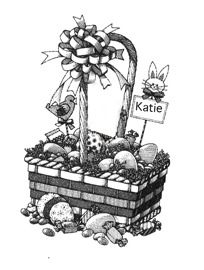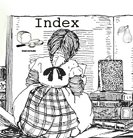EASTER WEEK
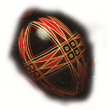 IN
THE GERMAN-RUSSIAN COLONIES continued
IN
THE GERMAN-RUSSIAN COLONIES continued
EASTER DAY (Osterntag)
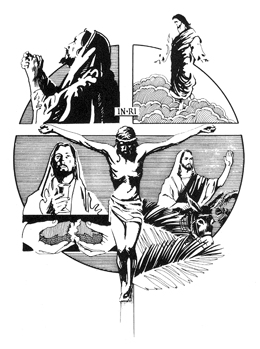
The twig and branches are then use upon the late risers of the house and this is called Schmackostern or Osterstiepen.
"CHRISTOS VOSKRESS!" (CHRIST IS ARISEN!)
Before dawn, some of the villagers would rise, dress and then walk out to a place where the sun rise could be seen for this was the day the scriptures of the bible tell us that Jesus Christ rose from the dead.
"VOESTENNA VOSKRESS" (He is truly arisen!")
These early risers would return to their homes.
The adults, who did not rise for the dawn services, were up early to prepare for the day's events.
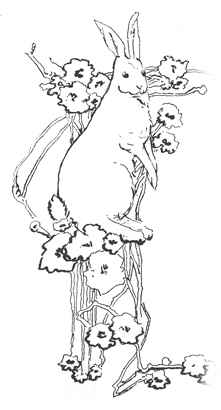
Easter Bunny (Oterhase) |
|
The "key bone" is a "Schluesselbein.
Later in the USA as the Easter Parade, which didn't have floats or balloons but was just people walking along main street in a small village or a walk in a town's or cities' park..
Photographs of Easter Walks in the US:
- Detroit Michigan: http://info.detnews.com/history/story/index.cfm?id=102&category=life
- New York City, New York: http://www.chiff.com/a/travel-nyc-easter.htm
- Holyoke, Mass. : http://www.holyokemass.com/quickclicks/qc_005_easter/index.html
- Sunnyside Easter Parade, Toronto, Canada: http://www.parkdale.tv/sunnyside.html
Remember Red Estair and Judy Garland singing in the 1948 Irving Berlin movie called Easter Parade:
In your Easter bonnet, with all the frills upon it
You'll be the grandest gal in the Easter parade.
I'll be all in clover, and when they look us over
We'll be the proudest couple in the Easter parade.
Links about just the Easter Bonnets:
- Article by Theresa Greene: http://www.bellaonline.com/articles/art29982.asp
In the late 1800s and 1900s, in some places, the more affluent paraded in carriages in the city parks.
As boys, who are always ruff and tumble by nature's design just had to tap their eggs together to see whose egg would break first and in time it became part of a tradition and everyone joined the contest. It was known as Eierpicken Eierschieben or Schurwele.
There was the egg race (Eierlesen) which was usually a relay race. All ages joined in the fun.
There was the horse races. The prize for the winner varied.
I didn't know this, but in Germany, eggs were used to pay their Easter taxes to their masters. The wealth of the master depended upon how many eggs and other perishable goods he received as gifts. And the more popular a master was the more he received.
Egg hunting can be traced back to early times in Germany to about the year 1662.
The earliest decorated egg dates back to the 4 AD and was found in a Romano-Germanic sarcophagus near the town of Worms.
|
No one knows for sure how the tradition of decorating eggs
started.
Decorated eggs are , sometimes, displayed in various ways. In a crude form, they were boiled and pushed through with a spike on a stick which could be decorated with ribbons. Some were placed in glass vases. Sometimes a doll's face was made of an egg and given a body of straw or cloth which represented "new life". Some eggs were made into a bird with feathers as plumes and sticks as legs... This as known as a Ostervogel or Paradise Bird (Paradiesvogel) or the "Holy Spirit Dove" (Heiliger-Geist-Tauble). A wreath of eggs was often the display of a victory or a center piece for the Easter table. Added to the Easter decoration were spring flowers such as daffodils and pussy willows. Hard boil eggs were served at supper along with salt, bread and a piece of lamb. Sometimes, the eggs were shelled and the yolks smashed and then replaced in the hollow of the half white of the egg and became what we know as deviled eggs. |
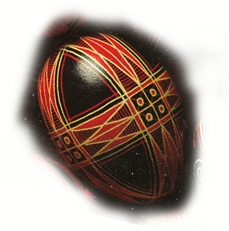
|
In some villages, children would sing for eggs as they walked from house to house. This was called "Easter singing" (Ostersingen).
Happy
Easter!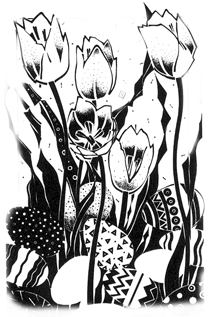 Frohe Ostern!
Frohe Ostern!
A good day to start on the leftovers. There is one particular left over dish which is called "Eler in gruener Sosse" ("eggs in green sauce"). It is suppose to be delicious but I've never eaten it and have no idea what it consists of as far as the ingredients of the sauce. Have you?
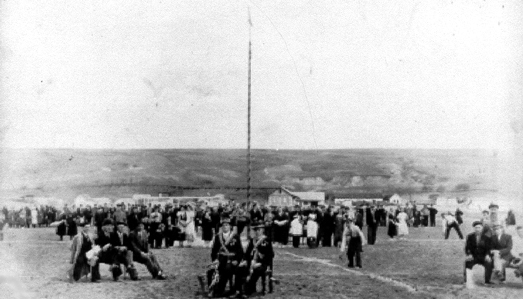
Kurudschika Village in Bessarabia, S. Russia, Easter Monday in 1938

